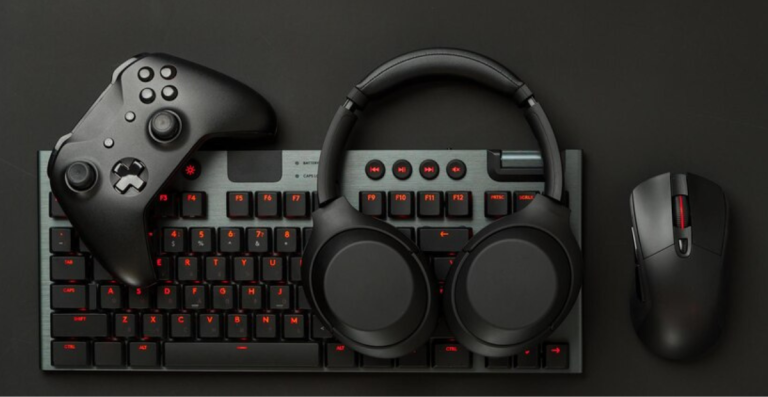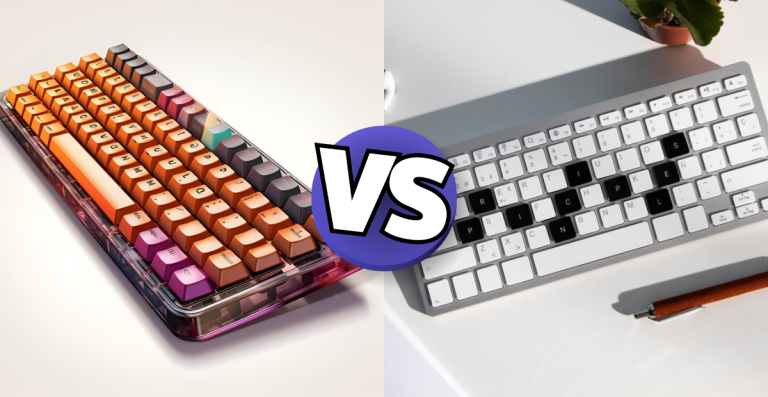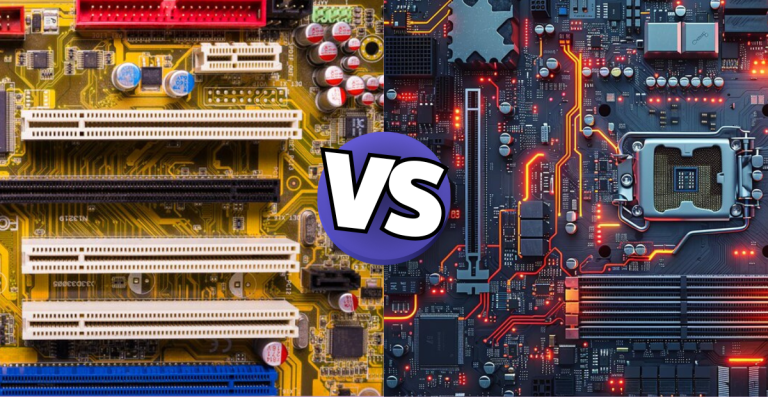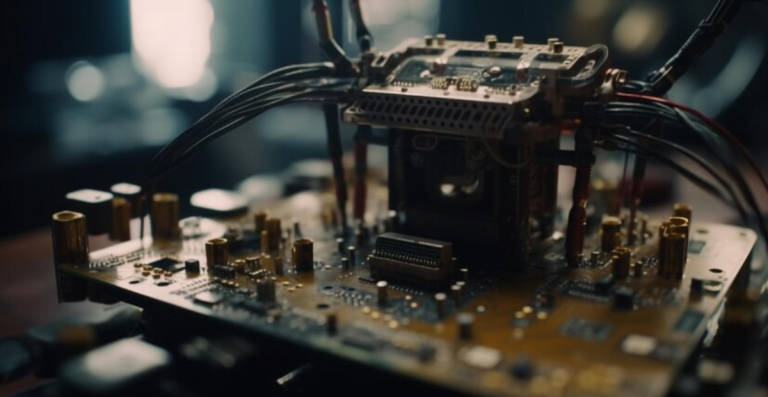NVIDIA vs AMD: Performance Comparison in 2025
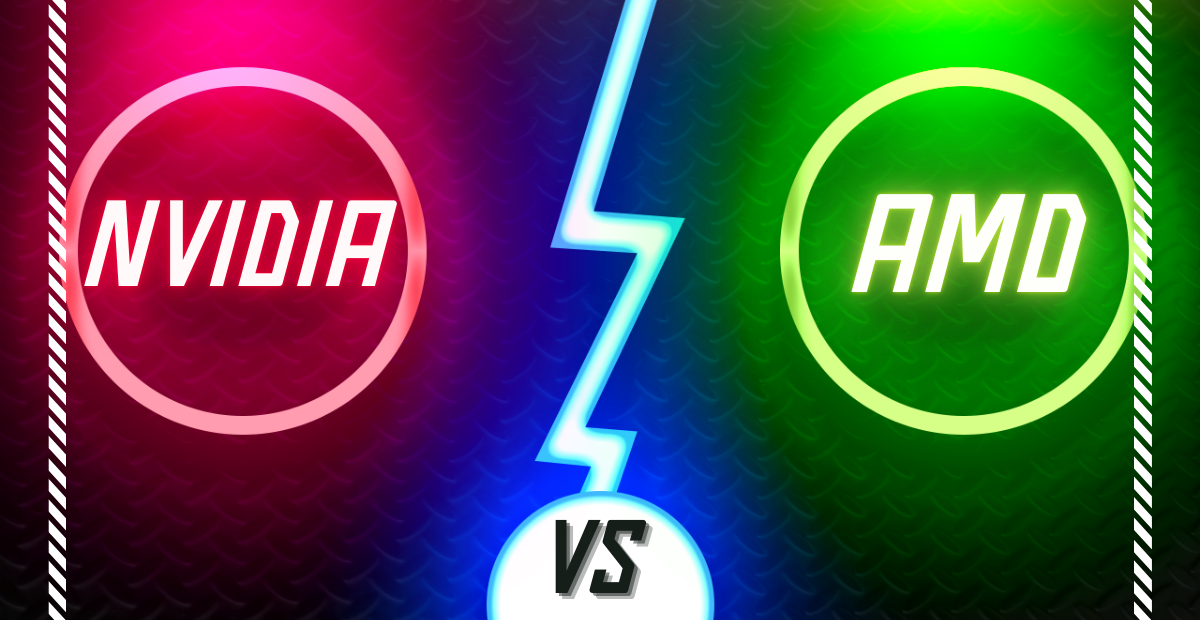
One of the graphics card industry’s most competitive segments is now the midrange GPU market. Intel and AMD are fighting for supremacy in the low-cost gaming market while NVIDIA concentrates on high-end AI and data center hardware. Regarding cost, performance, and software compatibility, AMD’s venerable Radeon RX 7000 lineup is being challenged by Intel’s Arc Alchemist and Battlemage series.
Because of this change, midrange GPUs are now more widely available and feature-rich than before. Intel has released more competitive hardware and improved drivers after learning from its first-generation Arc’s difficulties. AMD has been working to improve its RDNA 3 architecture in the interim, emphasizing efficiency and gaming performance per dollar. As a result, gamers wishing to upgrade without going over budget will find a compelling face-off.
In 2025, selecting between AMD Radeon and Intel Arc involves more considerations than just raw frame rates. Architecture, real-world performance, driver maturity, power efficiency, ecosystem compatibility, and long-term value are all evaluated. Customers are finally witnessing genuine competition and better offers in the midrange segment as both companies hone their tactics and introduce hardware designed for 1080p and 1440p gaming.
Key Takeaways:
- The return of Intel Arc: With competitive performance in the $250–$400 range, Intel’s second-generation Battlemage GPUs have significantly outperformed the original Alchemist series.
- AMD continues to be the efficiency leader. AMD’s RDNA 3 midrange cards, such as the RX 7600 XT and RX 7700, are dependable options for mainstream gamers due to their superior power efficiency and sophisticated software support.
- Driver maturity is still important: AMD continues to lead in long-term stability and compatibility, particularly with older DirectX 11 games, even though Intel has closed the gap in driver optimization.
- AMD provides faster rasterization and marginally better ray tracing at the midrange level, which is different from AI support. AMD’s FSR is challenged by Intel’s cutting-edge XeSS upscaling technology.
- Both brands provide good value in terms of price and performance, but AMD has more models and a longer history, while Intel uses aggressive pricing and distinctive feature sets to gain market share.
The GPU Market Landscape
The GPU market has changed significantly as of 2025. Although NVIDIA continues to rule the workstation and high-end markets, the midrange market, which is typically priced between $200 and $450, has changed its emphasis.
AMD’s grip on gamers on a tight budget is directly targeted by Intel’s renewed push with its Arc Battlemage series. Due to increased competition brought about by this calculated move, end users now enjoy better feature-to-price ratios and more frequent launches.
Normalizing global supply chains and the decline of the GPU mining boom have contributed to price normalization. Because of this, midrange GPUs are no longer being overpriced, which makes them suitable for both entry-level enthusiasts and mainstream builders.
Impact on Revenue and Market Shares
Both AMD and Intel have established significant market shares by volume, even though NVIDIA still leads in revenue thanks to its high-end products. Sales of AMD’s Radeon RX 7000 midrange lineup have been steady, particularly in areas like Europe and South Asia, where affordability and power efficiency are top concerns.
Intel has made a significant impact on market perception, despite still trailing in terms of total units shipped. Intel Arc cards accounted for roughly 9–12% of midrange discrete GPU sales in Q1 2025 alone, a significant rise from just 4% in the same period the previous year. Even though these increases are small, they show a high level of user interest, particularly among low-cost PC builders.
Trends in Market Share and Revenue
According to market analysts, AMD dominates the $250–$350 GPU market, accounting for more than 40% of the market. By undercutting AMD’s pricing and combining Arc GPUs with OEM desktops and system integrators, Intel is quickly catching up.
Revenue trends also show that Intel is becoming more well-known and gaining the support of Linux users and novice builders, despite earning less money per unit as a result of its aggressive pricing. AMD, meanwhile, keeps concentrating on improving its margins by providing dependable driver support, reduced TDPs, and strong efficiency that appeals to a more seasoned audience.
It is no longer a two-player game in the current midrange GPU market. Even though NVIDIA is missing out, 2025 might be remembered as the year that the midrange market finally experienced true three-way competition due to Intel’s expanding presence.
Comparative Analysis of GPU Technologies
The true distinction between AMD Radeon and Intel Arc is hidden beneath the surface. Both companies have developed their midrange GPU lineups in different ways, from architectural choices to real-world performance and driver maturity. Making an informed purchase in 2025 requires an understanding of these fundamental technologies.
Architectural Differences
Based on the Xe²-HPG architecture, Intel’s Battlemage GPUs are a significant improvement over previous generations, emphasizing increased throughput and improved energy efficiency. This architecture improves efficiency, particularly in complex scenes, by utilizing a sophisticated tile-based rendering system that is tailored for contemporary game engines.
AMD’s chiplet design, which enables greater scalability and cost-effectiveness, is maintained in its RDNA 3 architecture, which powers its RX 7600 and RX 7700 series. RDNA 3 keeps AMD’s lead in raw rasterization power by focusing on energy efficiency and improvements in instructions per clock (IPC).
- Tile-based rendering improves performance in games like Unreal Engine 5 by reducing the amount of memory bandwidth required.
- A more modular approach is made possible by AMD’s chiplet design, which lowers manufacturing costs without sacrificing performance.
- New scheduler designs are incorporated into Intel’s Xe²-HPG architecture to improve parallelism.
- For scenarios involving a lot of multitasking, RDNA 3 enhances asynchronous compute workloads.
- Advanced low-level API optimizations for Vulkan and DirectX 12 are supported by AMD.
Performance in Graphics and Gaming
AMD typically produces higher frame rates in conventional rasterization workloads when comparing real-world gaming benchmarks at 1080p and 1440p. For example, in several well-known games, the RX 7600 XT outperforms Intel’s Arc A770.
But in more recent DirectX 12 and Vulkan-powered games, where their enhanced frame pacing and driver stability are noticeable, Intel’s architecture closes the gap. This makes gameplay more fluid, especially in demanding open-world games.
- For esports games like Fortnite and CS: GO, AMD GPUs typically perform best in rasterized scenes.
- In Cyberpunk 2077 and Forza Horizon 5, Intel’s GPUs show less frame time variance.
- In more recent games, Intel’s architecture manages intricate post-processing effects more effectively.
- AMD’s more experienced drivers help legacy games from the previous generation run more smoothly.
- According to benchmark tests, Intel is reducing the FPS difference in Vulkan API titles by 5–8%.
Support and Stability for Drivers
For GPU usability, driver quality is essential. With improved per-game optimization profiles, diagnostic telemetry, and more frequent driver updates, Intel has made great progress. Overall stability has improved, though minor issues may still arise with some legacy DirectX 11 titles.
With their wide game support and minimal CPU overhead while playing, AMD’s Adrenalin drivers continue to be a standard for reliable updates. Because of its dependability, AMD is the go-to option for gamers who enjoy a wide variety of games.
- For enthusiasts, Intel’s Arc Control app now provides comprehensive tuning options.
- Monthly feature releases and weekly hotfixes are part of AMD’s driver update cycle.
- Compared to prior years, Intel reports a 20% decrease in driver-related collisions.
- AMD’s drivers help with performance in situations where the CPU is limited by maintaining a small system resource footprint.
- In older DirectX 11 games like Skyrim, Intel continues to experience sporadic minor issues.
Ray Tracing Capabilities and Artificial Intelligence
AMD’s RDNA 3 ray accelerators still have a small throughput advantage, but Intel’s Xe cores have developed to provide competitive ray tracing performance in midrange GPUs. Both companies offer AI-powered upscaling options:
AMD’s FidelityFX Super Resolution (FSR 3) uses spatial upscaling techniques with wide game compatibility, while Intel’s XeSS uses machine learning to improve image quality and minimize artifacts. Each strategy offers unique benefits in terms of performance scaling and image clarity.
- In compatible games such as Deathloop, Intel’s XeSS exhibits enhanced motion clarity and edge detail.
- Numerous games, such as Resident Evil Village, use AMD’s FSR 3.
- Scenes with a medium level of complexity are handled effectively by Intel’s ray tracing units.
- Compared to RDNA 2, RDNA 3 ray accelerators decrease latency in ray tracing effects.
- Expanding driver integration and game support are features of both AI upscaling solutions.
Product-Specific Highlights
The product lineup shows how AMD and NVIDIA are positioned strategically in the GPU market for 2025. Both businesses provide a variety of choices, ranging from flagship cards that push the limits of technology to entry-level models made for casual players. The variations among these groups demonstrate how each manufacturer strikes a balance between cost, functionality, and creativity.
Flagship GPUs: RTX 4090 and RX 7900 XTX
With its outstanding ray tracing capabilities, AI acceleration, and unparalleled raw power, NVIDIA’s RTX 4090 continues to be the unchallenged powerhouse. With competitive rasterization performance and more aggressive pricing, AMD’s RX 7900 XTX presents a strong substitute.
Although their feature sets and power consumption vary, both cards are aimed at enthusiasts looking for the best gaming and content production capabilities.
- With DLSS 3 support, the RTX 4090 provides notable frame-per-second increases in ray-traced games.
- High-resolution gamers will find the RX 7900 XTX appealing because it offers more VRAM at a lower MSRP.
- AMD’s flagship uses about 350W of power when under load, whereas NVIDIA’s flagship uses about 450W.
- Beyond gaming, the RTX 4090 performs exceptionally well in AI workloads, such as deep learning assignments.
- AV1 encoding is supported by AMD’s card for effective video capture and streaming.
Mainstream and Budget Offerings
AMD’s RX 7600 and Intel’s Arc A770 are aimed at gamers who prefer 1080p and 1440p and want good performance without going over budget. To increase its market share, Intel aggressively undercuts AMD on MSRP, demonstrating the importance of pricing in this situation. Despite differences in driver maturity and feature completeness, both GPUs provide respectable performance for the majority of contemporary games.
- AMD’s RX 7600 series is frequently 10-15% more expensive at retail than Intel’s Arc A770.
- In well-known esports games, AMD’s cards typically have higher average frame rates.
- Intel improves the efficiency of media playback by providing hardware-accelerated AV1 decoding.
- When combined with Ryzen CPUs, AMD supports Smart Access Memory to provide modest performance improvements.
- At peak loads, Intel GPUs typically use a little bit more power than their AMD counterparts.
New Technologies and Their Prospects
Both AMD and Intel are making significant investments in the features of the upcoming GPU generation. While Intel is strengthening its XeSS ecosystem and adding more hardware AI acceleration, AMD concentrates on enhancing chiplet integration and extending AI capabilities.
Future releases and user experiences will be influenced by the development of adaptive sync technologies, variable rate shading, and enhanced ray tracing fidelity.
- AMD is working on the next-generation Infinity Cache to increase bandwidth and decrease latency.
- Intel intends to increase XeSS support through new collaborations and developer resources.
- Both businesses are looking into hardware support for AI-based denoising in real time.
- In RDNA 3 and Xe2 architectures, variable rate shading is becoming more and more optimized.
- Adaptive sync tech like FreeSync and G-Sync compatibility is expanding across midrange GPUs.
Ecosystem and Compatibility
The overall ecosystem and compatibility features are crucial to the user experience; a GPU’s performance is not solely determined by its raw power. Both AMD and NVIDIA have developed sizable hardware and software ecosystems that facilitate a range of professional workflows, open-source communities, and gaming configurations.
The Software and Gaming Ecosystem
With GeForce Experience, smooth driver updates, game optimization, and features like NVIDIA Reflex for less input lag, NVIDIA’s software ecosystem keeps raising the standard. Users who desire greater control over their gaming experience will find AMD’s Adrenalin software appealing because it offers comprehensive performance tuning and visual customization. Despite being more recent, Intel’s Arc Control is developing quickly thanks to features like improved game compatibility and hardware monitoring.
Technologies for Monitoring and Adaptive Sync
For fluid visuals, adaptive sync technology is essential. G-Sync from NVIDIA offers excellent tear-free gaming, but it frequently calls for particular monitors. Most gamers can now access adaptive sync thanks to AMD’s FreeSync, which is more widely available at different price points. Users on a tighter budget can benefit from Intel Arc’s increased compatibility with FreeSync monitors thanks to its support for VESA Adaptive Sync.
Support for Open-Source and Linux Environments
AMD’s strong dedication to open-source drivers that provide stability and good performance makes it a popular choice among Linux users. NVIDIA’s proprietary drivers are superior in terms of raw power but fall short in terms of integration with the open-source community. Positive momentum for GPU support in open-source environments is indicated by Intel’s early Linux Arc drivers, which offer new choices.
Key Takeaways
- NVIDIA excels in polished, competitive gaming software.
- AMD’s customization features cater to enthusiasts.
- Intel is building its software ecosystem quickly.
- FreeSync offers broader monitor compatibility than G-Sync.
- Open-source driver support favors AMD and Intel on Linux.
Final Thoughts
NVIDIA and AMD are still fierce rivals in 2025, each with unique advantages. NVIDIA is the industry leader in flagship GPU power and well-designed software features, which makes it the perfect choice for gamers looking for the newest and best gaming technology.
AMD appeals to Linux users and gamers on a tight budget by striking a balance between powerful performance, competitive pricing, and first-rate open-source support. Both businesses keep improving their driver stability, adaptive sync technologies, and ecosystems.
Priorities such as price, platform compatibility, software polish, or raw power will determine which option is best for you. In the end, the competition between NVIDIA and AMD spurs innovation, which helps both professionals and gamers.


